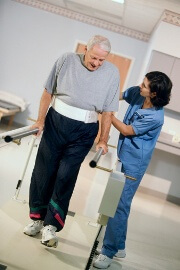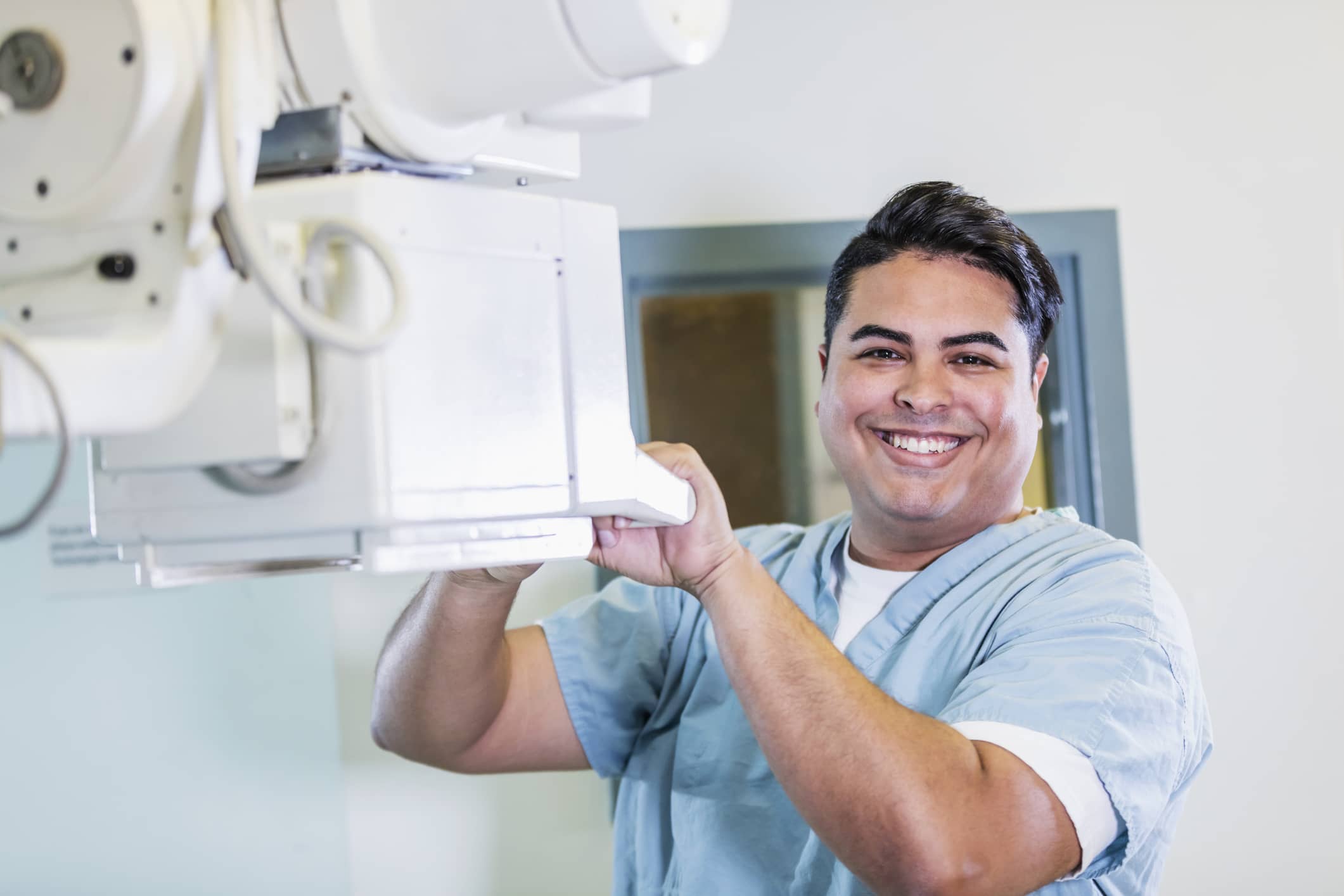
Top Workplace Injury Risks for Allied Health Professionals
OCCUPATIONAL AND PHYSICAL THERAPISTS CAN LEARN TO MITIGATE RISKS FROM PATIENT HANDLING
While allied health professionals enjoy the rewards of helping patients back to health and optimal functioning, they also face on-the-job hazards associated with patient handling. Yet savvy care providers can minimize the risk.
“The issue of safe patient handling, as it relates to patient safety and worker safety, applies to any position involved in providing manual support to a patient,” said Alice_Bell_180.jpgAlice Bell PT, DPT, GCS, American Physical Therapy Association spokesperson and vice president of clinical services for Genesis Rehabilitation Services in Agawam, Mass.

Some research has found 90 percent of physical therapists (PTs) have experienced a work-related musculoskeletal disorder (WMSD) at some time in their careers. Amy R. Darragh, PhD, OTR/L, FAOTA, interim program director of the occupational therapy division in the School of Health and Rehabilitation Sciences at The Ohio State University in Columbus, and colleagues, have studied the problem for years. In 2009, she reported occupational therapists (OTs) had an annual work-related injury rate of 16.5 per 100 full-time workers, with PTs having a similar rate of 16.9 per 100 full-time workers.
In a more recent study, half of therapists reported having WMSD pain related to their jobs within the prior four weeks, Darragh said. And the injuries affect therapists’ quality of life.
Search Allied Jobs in Your Specialty Now
“We found therapists were experiencing an impact on their life outside of work,” Darragh said. “They were having difficulty performing recreational and leisure activities and difficulty with social participation. They were so tired and sore at the end of the day that they did not want to go out to the movies or out with family.”
Contributing Factors to workplace Injuries
Research by Darragh and colleagues in 2013 found that 54 percent of all OT and PT injuries were due to patient transfers, repositioning and lifts, and manual therapy such as performing passive range-of-motion exercises or joint mobilization. Lifting equipment also was a factor in therapists’ WMSDs. The balance differed by practice area, such as patient falls in skilled nursing facilities and floor work in pediatrics. Outpatient PTs performing a significant amount of joint mobilization and soft tissue work experienced more upper-extremity injuries.
“With transfers, lifting, repositioning, we saw musculoskeletal disorders in the back, neck and shoulder,” Darragh explained. “And people in the outpatient setting were experiencing musculoskeletal issues in hands and wrists, because all of the heavy work and strain on the smaller muscles and joints.”
While other health professionals, such as nurses, experience WMSDs, Darragh said some of the activities in the course of each professional’s tasks are different. For instance, a therapist focuses on what happens between the bed and chair, thinking about posture, weight shift, balance, alignment and how to improve recovery as part of the treatment, while a nurse tends to focus on getting the patient safely from bed to chair.

“The challenge comes in finding the balance between safety and supporting a patient’s self-performance to the extent they have the capacity to do so,” Bell explained.
Many things can contribute to an injury, Darragh found, including repetitive tasks, force, awkward posture, sustained posture and fatigue.
“Therapists do not necessarily put their care first; they put their patients’ care first,” Darragh said. “They may work in pain and alongside that comes fatigue, and that increases their vulnerability. It becomes a vicious cycle.”
Minimizing risk
“Think before you begin an activity,” Darragh advised.
Bell suggested therapists assess the patient’s capabilities and their own abilities, applying good body mechanics, taking advantage of available equipment, and being prepared to react.
While proper body mechanics will not prevent an injury associated with patient handling, it’s essential when using equipment, such as ceiling lifts and air transfer mattresses, Darragh said. Use of gait belts, slide boards and sit-to-stand devices can prove beneficial in reducing risk, Bell added. But she cautioned that therapists and other caregivers must learn the proper techniques to use with the devices before attempting.
“If there are safe patient handling programs in place in the facilities therapists are visiting, they should learn what the equipment does, where it’s kept, what they have access to and how to use it,” Darragh advised.
Darragh’s research indicates using safe-patient handling equipment does not adversely affect patient outcomes. Therapists reported they were able to spend more time treating the patient when they used such equipment, because they were able to work to the patient’s level of fatigue and not their own.
“Often [there] is a progression from the use of devices to, hopefully, reducing the dependence on devices as the patient recovers and gains greater musculoskeletal and neuromuscular control and cardiovascular endurance,” Bell said.
PTs and other allied professionals should not hesitate to ask colleagues or nursing staff for assistance when moving or lifting a patient.
Additionally, Darragh encouraged therapists to report injuries, seek care and take time off to heal when necessary.
Looking for a change? AMN has numerous allied health career opportunities in facilities across the country. Search our jobs today!
Additional Allied Travel Resources
While you continue your search for the perfect allied healthcare position, AMN Healthcare provides great resources to keep your career moving in the right direction. Begin the application process now, and then learn more about how AMN Healthcare can help you keep your career on the move.
- EAP: Our allied travelers gain access to a valuable set of Employee Assistance Program benefits.
- Allied Travel Jobs by Specialty: Explore allied jobs and learn about hourly salaries and the benefits of working in travel jobs.
- Search All Allied Jobs: Uncover new possibilities in your allied career by exploring both short and long-term options.
- Allied Healthcare Jobs: Learn how we can help move your career in amazing directions, both professionally and geographically by exploring opportunities by each state.
- More Allied Resources: Use the content here to learn everything you need to know about our allied recruitment process, including information on salary and benefits.



